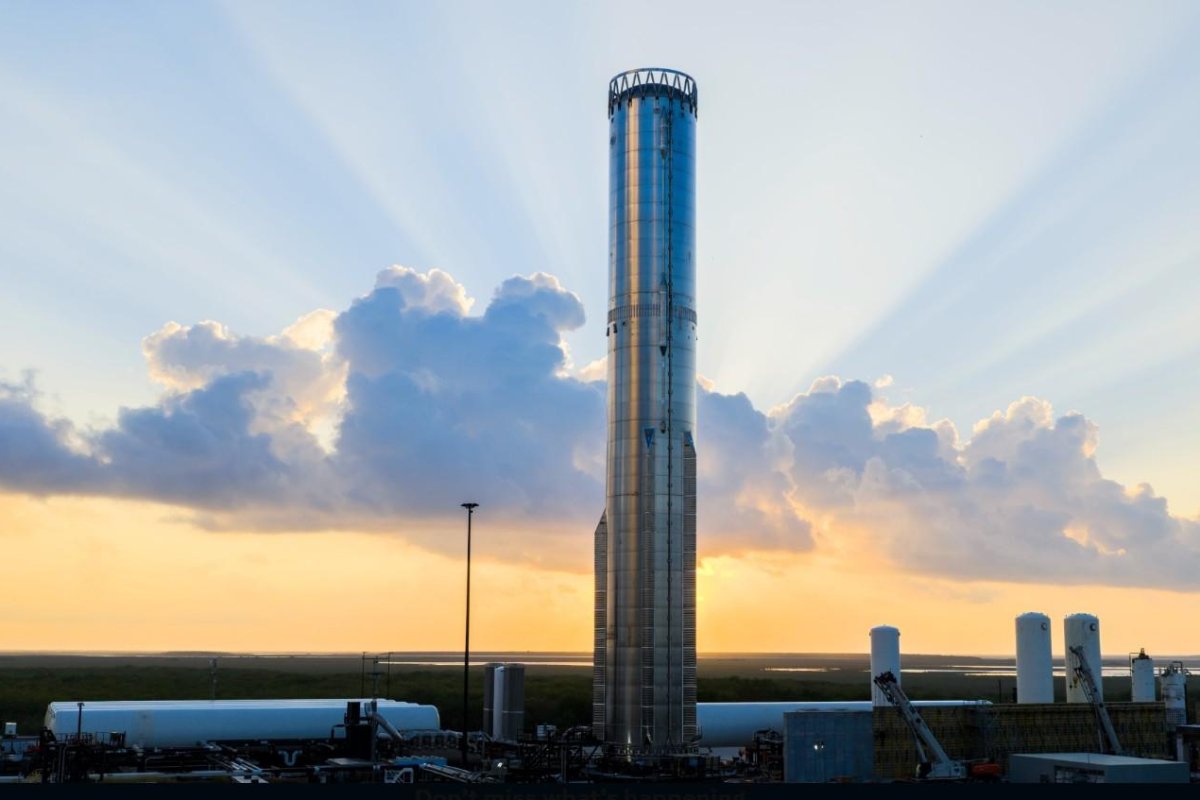SpaceX’s Starship appears at its complex in South Texas. Early Friday, the Super Heavy booster exploded during testing of the new booster. Photo by SpaceX/X
Nov. 21 (UPI) — SpaceX‘s Starship booster exploded during testing of the new Super Heavy in South Texas early Friday.
The incident was captured during SpaceX’s livestream around 4 a.m. CST.
SpaceX has had problems during testing of the jumbo-sized rocket, and this time it appears to have blown out an entire side of the lower section, Tech Crunch reported. The booster, called V3, was an upgraded version of Super Heavy and is 232 feet tall.
In Starship is 403 feet tall when fully stacked with the upper-stage of 171 feet.
In a post Friday on X, SpaceX said, “Booster 18 suffered an anomaly during gas system pressure testing that we were conducting in advance of structural proof testing. No propellant was on the vehicle, and engines were not yet installed.”
No one was injured as they “maintain a safe distance for personnel during this type of testing. The site remains clear and we are working plans to safely reenter the site.”
SpaceX said “teams need time to investigate before we are confident of the cause.”
Booster 18, the first Super Heavy V3, is beginning prelaunch testing. The first operations will test the booster’s redesigned propellant systems and its structural strength pic.twitter.com/VUcFbmswpP— SpaceX (@SpaceX) November 20, 2025
There have been 11 flight tests of Starship and Super Heavy, starting on April 20, 2023. There was one more that year, four in 2024 and five this year.
The previous version of the rocket, V2, last flew Oct. 13.
Stardship splashdowns have occurred in the Indian Ocean, near the northwest coast of Australia. The Super Heavy booster performs its splashdown in the Gulf of Mexico near the Starebase launch site in Texas, adjacent to Boca Chica Beach near Brownsville.
Only two of the last two mission goals were successful with splashdowns of both stages.
During the first two flights, the “Mechazilla” chopstick-like mechanical arms caught the Super Heavy boosters near the launch site. This method wasn’t used in he last two missions.
SpaceX relaunched one of the boosters in May.
And the third Starship launch of 2025 resulted in the loss of Super Heavy and Ship, which is vehicle’s upper stage.
Ultimately, SpaceX plans to launch the Starship from its complex in Central Florida next year. Pad 39A at NASA’s Kennedy Space Center is being readied for Starship.
SpaceX is seeking to transfer fuel to Starship from a “tanker” rocket while in Earth orbit.
The V3 is 5 feet taller, and there will be only three boosters instead of four, Space.com reported.
The Starship V3 is designed to be larger and more powerful that will be capable of docking other Starships in orbit around the Earth, and later getting to the moon and then to Mars.
NASA wants to use Starship as a lunar lander for Artemis 3 to the moon. NASA wants this to happen in 2027 but SpaceX has pushed it to 2028.
“Unless we have some very major setbacks, SpaceX will demonstrate full reusability next year, catching both the booster and the ship and being able to deliver over 100 tons to a useful orbit,” SpaceX owner Elon Musk said in September.
SpaceX announced there an alternative plans to get astronauts to the moon, the first time since 1972 during the Apollo program.
NASA’s acting administrator, Secretary of Transportation Sean Duffy, announced plans last month to open up SpaceX’s contract to competition, including Blue Origin.
Blue Origin announced Thursday plans for a larger rocket design Its New Glenn is 322 feet.
Last week, Blue Origin launched a New Glenn for the second time from a Cape Canaveral Space Force Base complex in Florida. For the first time, the booster landed on its drone ship in the Atlantic Ocean.

